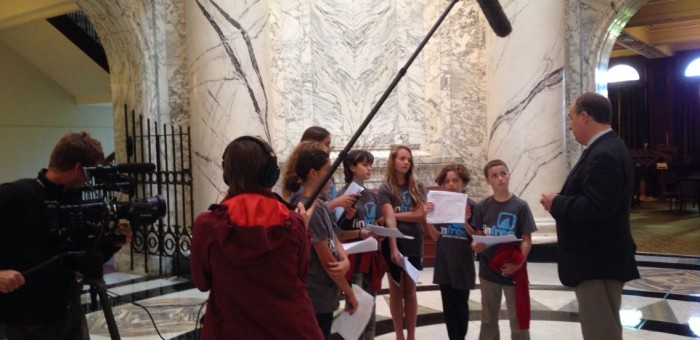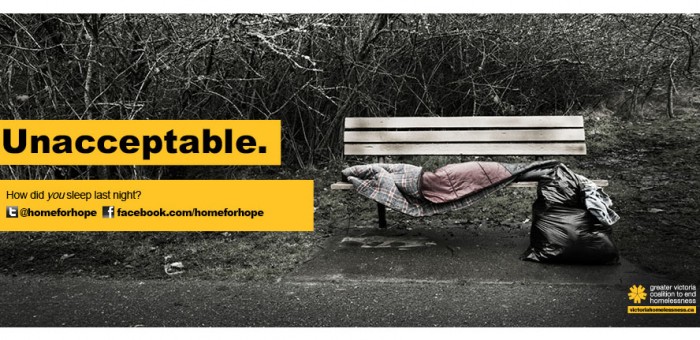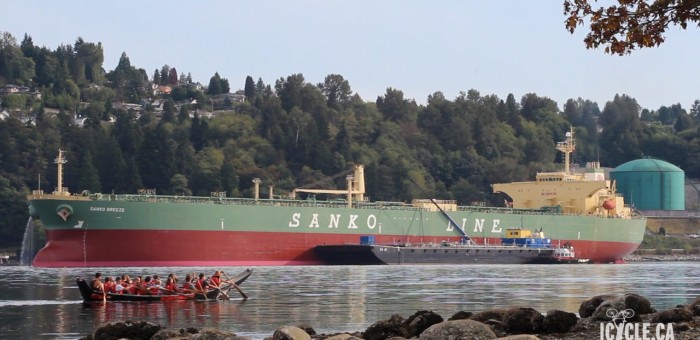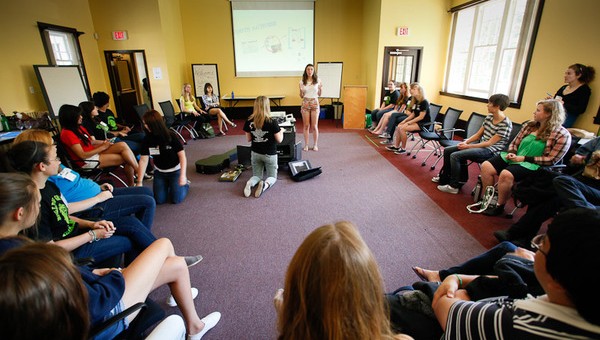Issues & Community Blog - Andrew Weaver: A Climate for Hope - Page 172
Constituency Report – Review of the Fall Session and Issues in the Community
The Fall 2014 session of the Legislature has concluded with the passage of the LNG emission and taxation bills. Watch Andrew Weaver report on the debates and votes, along with events and issues that affect the riding of Oak Bay – Gordon Head and everyone around the province.
Thank you to SHAW TV for providing this community service.
Contributing Factors to Homelessness
“There is no one profile of a person who is experiencing homelessness,
just as there is no one path that leads there.”
Greater Victoria Coalition to End Homelessness
Contributing Factors of Homelessness
Homelessness is more than what you see on the street. Nothing has become more evident to me while researching for this blog series than this one simple fact.
While people often view homelessness as an issue specific to the downtown core, the hard truth is that poverty and homelessness can take on many forms in communities all across the region.
Whether it be a middle-aged man injured on the job and unable to work, a single mother trying to support three children on minimum-wage, a young person struggling with mental illness and unable to hold down a job, or a senior who can’t afford rent and groceries on her monthly pension, poverty and homelessness know no boundaries.
Just as there is no single face of homelessness, there is also no single contributor to homelessness. From mental illness and addiction to domestic violence, to the many challenges facing both on- and off-reserve aboriginal persons, several factors can lead to poverty and homelessness.
Here in Greater Victoria and throughout B.C., one of the most significant contributors to poverty and homelessness is the gap between income and housing costs. While average rent costs continue to rise, the resources available to low income households have not changed, making it increasingly difficult for many to afford adequate housing.
As of April 2013, the average monthly rent paid by someone on income assistance in Greater Victoria was $501. However, the monthly shelter allowance for a single individual receiving income assistance is only $375. This means that many individuals are forced to forgo other basic necessities, such as food, clothing and health-related expenses, in order to cover the cost of their rent.
Similarly, the gap between the living wage in Greater Victoria and the minimum wage here in B.C. is staggering.
The living wage in our region – “the wage that both parents in a two parent, two child family need to make in a 35 hour work week to maintain an adequate quality of life” – increased to $18.73 per hour in 2013. In the same year, the minimum wage in B.C.was only $10.25 per hour; $8.48 lower than the living wage.
In order to make a living wage and maintain an adequate quality of life, an average family of four would have to earn a monthly income of approximately $5,222.36; even then they would not be able to afford to care for an elderly relative or disabled family member, to own their own home, or to save for education or retirement.
In reality, most low-income families earn at or slightly above minimum wage, making it virtually impossible for them to afford the high costs of living and keeping them in a constant battle to remain housed.
Housing Need
Affordable and supportive housing is considered a key factor to combating homelessness by service providers. Since 2008, almost 250 new supportive housing units and over 450 new affordable housing units have been built across Greater Victoria. While this is progress, it is not enough. The Coalition estimates that in order to end homelessness in our region we need an additional 250 – 750 units of supportive housing and 1500 units of non-market and low-market affordable housing.
Meeting these housing needs requires funding commitments from all levels of government: federal, provincial, regional and municipal. And this is precisely what local housing groups have been tirelessly campaigning for. Affordable housing projects saw a slight boost in funding recently when the Canadian and British Columbia Governments announced that they were committing an additional investment of over $300 million over five years. While this certainly helps, more funding is still needed if we hope to end homelessness completely.
Weekly Action Item
With Christmas quickly approaching we thought we would choose an action item that helps alleviate hidden poverty in the context of the holiday season: Christmas Hampers.
High costs of living and limited financial resources mean that many families in Greater Victoria are unable to provide their children with the same holiday experiences that the rest of us are fortunate enough to enjoy. To provide these families with much-needed additional support during the holiday season, several organizations in Victoria run Christmas Hamper Programs. These hampers, which can include basic food, clothing, or even small gifts, make Christmas brighter for hundreds of families throughout the city.
Organizations that run Christmas Hamper Programs include the Mustard Seed, CFAX Santa’s Anonymous, and the Goldstream Food Bank, to name a few.
So, if it is within your means, please consider donating to one of the many Christmas Hamper Programs in your community.
But please also remember that while these hampers will help to alleviate some of the need over the holiday season, they are not a permanent solution. Child poverty continues to be on the rise in B.C. and more government action is needed at all levels if we hope to end this trend. I will be touching on many of these issues over the coming weeks, for now click here for other ways you can take action to reduce child poverty.
Sign-up for Future Posts
To receive future posts on addressing poverty and homelessness directly to your inbox, please sign-up below.
Cleaning up a heavy oil spill on the BC Coast: The Trans Mountain capacity
This post is part of an ongoing series in which MLA Andrew Weaver will be sharing key information from inside the National Energy Board hearings on Kinder Morgan’s Trans Mountain pipeline proposal. To see previous posts, please click here.
If Kinder Morgan builds its pipeline, the number of oil tankers passing by our cities and along our coast will increase by almost 600%.
With every tanker comes the risk of an oil spill. I therefore want to take some time to discuss how we would clean up a spill. In particular, since Trans Mountain is required by the National Energy Board to show how it would respond to a spill, I think it is important to see what they are proposing.
The Current Oil Spill Response Capacity
To understand Kinder Morgan’s proposal, we first need to understand the current standards. Unfortunately, a study commissioned by the B.C. government last year showed just how woefully inadequate our current standards are.
Oil spill response in B.C. is managed by the Western Canada Marine Response Corporation (WCMRC). WCMRC is required to be able to respond to a spill that is as large as 10,000 tonnes of oil. This may seem like a lot, but to put it in context the Exxon Valdez oil spill was 40,000 tonnes and a single tanker will be carrying over 100,000 tonnes of oil.
Not only that, but the fact that WCMRC is able to respond to a 10,000 tonne spill does not actually mean it is able to recover the full 10,000 tonnes. In fact, according to the Federal Tanker Safety Expert Panel, “Evidence suggests that mechanical recovery rates, in optimal conditions, are usually only between 5% and 15% of the oil spilled.” This is because despite existing equipment, it’s often hard to contain and recover spilled oil.
So where does this leave Kinder Morgan?
Kinder Morgan’s Enhanced Spill Response Capacity
As a part of their application, Kinder Morgan is proposing to improve on current standards. In their “Future Oil Spill Response Approach Plan” Kinder Morgan proposes increasing WCMRC’s capacity so that it can respond to a 20,000 tonne spill. It also proposes reducing response times so that WCMRC would get to a spill site quicker and start cleaning it up before more of the oil has had a chance to spread. Implementing this enhanced response plan would likely be costly—it would require additional personnel, equipment, staging locations, etc.
It’s certainly a step in the right direction. But here’s the catch.
First of all, Kinder Morgan does not have direct control over whether this plan is implemented or not. They have worked with WCMRC to develop the proposal, but ultimately, it will be up to WCMRC and federal legislation to determine what the standards are. If standards are not legislated federally, then the WCMRC will have a harder time justifying the costs to the companies that fund it (including Kinder Morgan). You therefore cannot evaluate the risks and impacts associated with the pipeline on the assumption that this proposal will be implemented. There is simply no guarantee.
Not only that, but this plan still falls far short of what is needed to cover the risks of the project. A single tanker will carry over 100,000 tonnes of oil. Kinder Morgan itself has acknowledged that according to its own calculations there is a 10% probability that a spill will be larger than 16,500 tonnes. Cleanup capacity for anything beyond 20,000 tonnes will be significantly delayed while resources are brought in from other areas. Any delay, as Kinder Morgan has noted, will decrease the effectiveness of recovery efforts as oil spreads beyond containment areas.
Finally, I have already talked about the Federal Government studies that show that diluted bitumen—the heavy oil that would be transported by tanker—sinks in the presence of suspended particles. Unfortunately, Kinder Morgan has not proposed any capacity to clean-up sunken oil. I believe that this is simply unacceptable.
I’m glad that Kinder Morgan is making an effort to propose an enhanced oil spill response capacity. Given that they have been loading oil tankers on our coast for year now, this effort is long overdue. Unfortunately, it also comes up short of anything that can truly be called “effective”.
Celebrating youth in our community – Rebecca Tran
This is the twelfth in our series of stories celebrating the outstanding accomplishments of youth in our community. These inspirational young adults are enriching our lives with their passion and commitment to the betterment of society.
Rebecca Tran
 Rebecca loves volunteering; she loves keeping busy, and she loves spending time with family and friends. Rebecca’s enthusiasm is infectious and her vivacious personality inspirational to those around her. She is compassionate and possesses a strong commitment to bettering her community and the less fortunate in our society. A generation of children will be incredibly fortunate to be taught by Rebecca once she becomes an elementary school teacher in the not too distant future.
Rebecca loves volunteering; she loves keeping busy, and she loves spending time with family and friends. Rebecca’s enthusiasm is infectious and her vivacious personality inspirational to those around her. She is compassionate and possesses a strong commitment to bettering her community and the less fortunate in our society. A generation of children will be incredibly fortunate to be taught by Rebecca once she becomes an elementary school teacher in the not too distant future.
Rebecca was born and raised in Victoria, attending Northridge Elementary, Glanford Middle School and Reynolds Secondary, where she is currently in her graduating year. In her last year of middle school (Grade 8), Rebecca discovered the Flexible Studies Program at Reynolds. It was a perfect fit, and she credits her middle school Principal, Mr. Louis Scigliano, “a leader [she] really looked up to”, with encouraging and supporting her in her decision to apply.
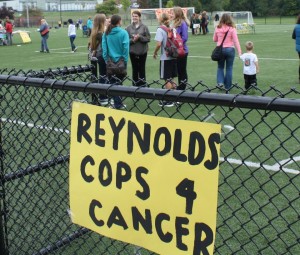 As noted in the program description, Flexible Studies at Reynolds Secondary “is designed for students interested in a structured inquiry-based approach to education, where students engage with their peers, teachers, community and environment as they pursue their academic potential.” In order to be eligible, a student needs a reference from a teacher and they must complete a number of essay questions, like, for example, “in what way do you hope to make a difference in your community?”
As noted in the program description, Flexible Studies at Reynolds Secondary “is designed for students interested in a structured inquiry-based approach to education, where students engage with their peers, teachers, community and environment as they pursue their academic potential.” In order to be eligible, a student needs a reference from a teacher and they must complete a number of essay questions, like, for example, “in what way do you hope to make a difference in your community?”
Rebecca decided the “Flex Program” was the right fit for her. She thrived as one of 30 English and 30 French Immersion students selected to enter the program in grade 9. Rebecca described how in the Flex Program the prescribed learning outcomes in the curricula mandated by the Ministry of Education are catered to individual students. As one example, she noted that in an English class a major project could involve writing a book or documenting a travel experience. In addition, she pointed out that the Flex Program allowed students greater opportunity to participate in extracurricular activities. And as you might imagine, Rebecca took full advantage of this flexibility.
 Rebecca is involved in numerous activities at her high school, including leadership (since Grade 9), marching band (since Grade 9) and dance (Grade 9 and 10). She has been a big contributor to the Cops for Cancer “Tour de Rock” campaign ever since her Grade 6 days at Glanford Middle School. She has dedicated time to car washes, scrap metal drives, bottle drives, movie nights, skate events and bake sales – it’s fair to say Rebecca knows how to get the job done. She will “never forget the energy in the room” when it was announced that Reynolds had raised $107,000.00 (final tally) this year.
Rebecca is involved in numerous activities at her high school, including leadership (since Grade 9), marching band (since Grade 9) and dance (Grade 9 and 10). She has been a big contributor to the Cops for Cancer “Tour de Rock” campaign ever since her Grade 6 days at Glanford Middle School. She has dedicated time to car washes, scrap metal drives, bottle drives, movie nights, skate events and bake sales – it’s fair to say Rebecca knows how to get the job done. She will “never forget the energy in the room” when it was announced that Reynolds had raised $107,000.00 (final tally) this year.
Despite the challenge of starting the 2014 term with the teacher’s striker, the school obtained yet another extraordinary fundraising result. Rebecca told us about the resolve of the students, who were “going to do this”; they used the missed school time to hold meetings, get organized and start planning fundraising events. Rebecca was determined “to use the strike as strength”.
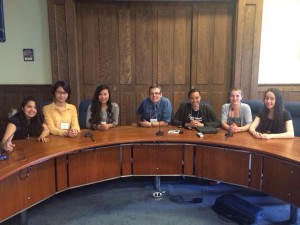 There are countless more examples of Rebecca’s school activities and volunteer involvement: Halloween for Hunger (collecting food for food bank); Tour Guide for Information Night (directing parents and students to numerous locations in the school and answering questions); Middle School Presentations (speaking in front of multiple Grade 8 classes); preparation for multiple school assemblies, and many more.
There are countless more examples of Rebecca’s school activities and volunteer involvement: Halloween for Hunger (collecting food for food bank); Tour Guide for Information Night (directing parents and students to numerous locations in the school and answering questions); Middle School Presentations (speaking in front of multiple Grade 8 classes); preparation for multiple school assemblies, and many more.
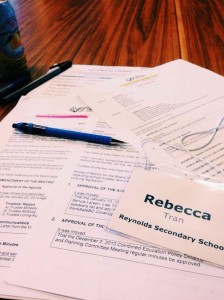 Rebecca is also the Reynolds Secondary Student Trustee Representative. One student trustee is selected from each School District 61 high school to work with the District Superintendent. Student trustees provide input on educational matters and offer a student perspective at meetings of the School District 61 Board of Trustees, as well as the Education Policy and Operations Policy and Planning groups.
Rebecca is also the Reynolds Secondary Student Trustee Representative. One student trustee is selected from each School District 61 high school to work with the District Superintendent. Student trustees provide input on educational matters and offer a student perspective at meetings of the School District 61 Board of Trustees, as well as the Education Policy and Operations Policy and Planning groups.
Rebecca has been on the Honour Roll since Grade 9 and has earned awards for Excellence in Academic Achievement, Leadership Service and the Teacher’s Choice Award. As a member of the Graduating Class Executive Committee, she has been involved in organizing dances and school spirit events. She has been a Peer Mentor since Grade 11, which involves mentoring new students and connecting them to activities, teachers and friends so that all students feel valued at Reynolds. While she is modest about her many achievements, it is clear Rebecca is a gifted leader and a hard worker.
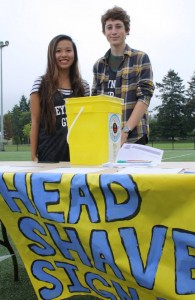 After graduation, Rebecca plans to proceed towards post secondary education in Social Sciences or Education at either McMasters, Bishops or the University of Victoria. At least part of her desire to become a teacher can be attributed to the inspiring mentorship of two Reynolds teachers: Ms. Sarah Reside who “changed the way I look at education” and Ms. Heather Coey, who runs the leadership program and the school’s Green Group. Ms. Coey “is incredible and makes a huge contribution to our school”, with initiatives such as the Salad Bar, where teachers and students are provided with nutritious salads once per week made from produce grown in the school garden. Rebecca is one 3 managers of the weekly Salad Bar program.
After graduation, Rebecca plans to proceed towards post secondary education in Social Sciences or Education at either McMasters, Bishops or the University of Victoria. At least part of her desire to become a teacher can be attributed to the inspiring mentorship of two Reynolds teachers: Ms. Sarah Reside who “changed the way I look at education” and Ms. Heather Coey, who runs the leadership program and the school’s Green Group. Ms. Coey “is incredible and makes a huge contribution to our school”, with initiatives such as the Salad Bar, where teachers and students are provided with nutritious salads once per week made from produce grown in the school garden. Rebecca is one 3 managers of the weekly Salad Bar program.
 Ten years from now Rebecca would like to be teaching in Victoria. The high caliber of teachers she has encountered at Reynolds has left her with a profound appreciation of the teaching profession. Rebecca is passionate about education as you “can change the way students look at themselves or even the world.”
Ten years from now Rebecca would like to be teaching in Victoria. The high caliber of teachers she has encountered at Reynolds has left her with a profound appreciation of the teaching profession. Rebecca is passionate about education as you “can change the way students look at themselves or even the world.”
For fun Rebecca loves walking, hiking and taking jazzercise classes. She also enjoys volunteering in the community, including visiting patients at Victoria General Hospital and serving dinner at Our Place homeless shelter once a week.
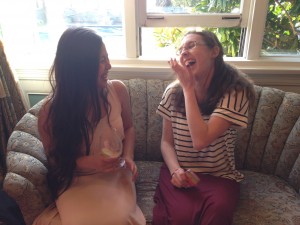 Rebecca played on the field hockey team at Reynolds from Grade 9 to Grade 11. She also manages to hold down a part time job, working 12 to 15 hours per week at a local café since 2012.
Rebecca played on the field hockey team at Reynolds from Grade 9 to Grade 11. She also manages to hold down a part time job, working 12 to 15 hours per week at a local café since 2012.
Interviewing Rebecca was an absolute delight. She is enthusiastic, joyful and pleasure to be around. She is one of those people who just rolls up her sleeves and gets the job done. And she does so in a thoughtful and humble way. Without any doubt, Rebecca will become an outstanding teacher one day. She’ll inspire a new generation of students just as she has already inspired her peers at Reynolds and so many others in our community.
Homelessness in Greater Victoria
“Just because you’re not seeing people on the streets does not mean homelessness is not there.”
Andrew Wynn-Williams, Executive Director of the Greater Victoria Coalition to End Homelessness
Homelessness
As temperatures start to drop and the holiday season approaches, Greater Victoria’s homelessness crisis is at the forefront of our minds.
While poverty and homelessness have been an on-going concern in our region for some time, recent reports have highlighted just how serious the problem continues to be.
There has been noticeable improvements thanks to programs put in place by dedicated organizations across our community, however, more still needs to be done. Dedicating their time and resources to improving the lives of those in need, these groups need our ongoing support to reach their ultimate goal: ending homelessness in Greater Victoria.
Throughout December I will be posting a series on poverty and homelessness in our region. The purpose of this blog is to help increase awareness and to offer action items that we as individuals can take to support local organizations in their work to address poverty and homelessness.
State of Homelessness in Greater Victoria
To understand just how prevalent homelessness is, last February the Greater Victoria Coalition to End Homelessness undertook their 4th annual point-in-time Facility Count. The purpose of the study was to get a sense of how many people are homeless and using supportive facilities. They counted 1,167 individuals in need of shelter on just one night, including 70 families and a total of 116 children.
While these numbers are startling, what is worse is that they only represent a portion of the people in need. Point-in-time counts are one-day counts and therefore can only provide an estimate of the number of individuals experiencing homelessness on a given day. These numbers fluctuate from day-to-day and do not take into account those who sleep outside, couch-surf, or live in overcrowded or inadequate accommodation, resulting in an underestimation of the number of people in need.
In fact, measuring the exact extent of homelessness is extremely difficult.
What we do know is that from April 2012 to March 2013, 1,659 unique individuals made use of an emergency shelter bed in five of six emergency shelters in Greater Victoria, resulting in an over-occupancy rate of 112%. Meanwhile many more are at-risk of homelessness with almost a third of renter households in “core housing need”, meaning more than 30% of their income is spent on housing, and a tenth in “severe housing need”, spending more than 50% of their income on housing.
The situation is just as severe across BC and throughout Canada. As of March 2013, 1,477 households in our province were on the wait-list for BC Housing and, according to Food Banks Canada, at least 20,524 individuals accessed food banks in one month alone in 2012.
The need for action is clear and there are a number of local organizations providing invaluable services to those experiencing poverty and homelessness.
They have been making significant progress – but they need your help.
While these service providers are doing all that they can to provide support to those in need, there exists a significant shortfall in the amount of resources available to assist them in their work. These shortfalls can be seen in local emergency shelters, which consistently operate at over capacity and turn individuals away on a nightly basis, as well as in the increasing strain placed on outreach programs such as at Our Place, where demand for services has hit record numbers.
Weekly Action Item
Each week during this series, the post will end by identifying one tangible action you can take to help address homelessness in your community. The purpose of these action items is to provide you with suggestions for simple ways in which you can give back and make a difference in someone’s life.
This week’s action item aims to help provide the countless service providers across Greater Victoria with the support they need to continue offering support to those in need. Through food and clothing contributions, monetary donations and volunteer help, these organizations are able to provide the services that they offer because of the generosity and support of people like you.
Every donation that they receive – no matter the size, extent, or capacity – and every volunteer that walks through their doors, has an immeasurable impact on someone’s life.
Here are a few examples of organizations in Victoria that you can reach out to if you would like to make a donation or volunteer your time:
- Our Place Society – an inner-city community community centre serving vulnerable populations including the working poor, impoverished elderly, mentally and physically challenged, addicted and the homeless.
- The Mustard Seed – a local non-profit organization that runs a number of programs including a drop-in centre, a clothing bank, counselling services, and the largest food bank on Vancouver Island.
- Society of St. Vincent de Paul – a charity group providing a number of services to people that fall below the poverty line, including emergency food, material support, counselling programs and low cost housing.
- Victoria Cool Aid Society – a charitable organization that advocates for and provides emergency shelter, supportive housing, integrated health care and other support services to those in need.
- United Way of Greater Victoria – a registered charity funding programs and services that offer safe and stable housing, increase access to food, provide financial literacy support and offer employment training and skills development.
- Beacon Community Services – a community-based, non-profit, social, employment, health, recreational, housing and volunteer services agency offering a range of services and programs to thousands of clients in the Capital Region.
Sign-up for Future Posts
To receive next week’s post delivered directly to your inbox, please sign-up below.

